 More interesting than the basalt walls was the string of large pools along the Lolworth Creek that runs parallel. These pools are host to nesting swans, mudlarks, herons and Jacarnas, all amongst a field of blue water lilies. Much more interesting! The road, initially through scrubby grassland, wound now through increasingly hilly country where we found old mine shafts and derelict mine sites from the 1930’s. Returning to the main road we headed west to Hughenden, where you have to stop at the Flinders Discovery centre. Hughenden is at the eastern point of the “Dinosaur Triangle” – Richmond, Winton, Hughenden, where the fossil record is richer than anywhere else in Australia bar Riversleigh. Most famous is the “Muttaburrasaurus”, a replica skeleton is the centerpiece of the exhibition and is very impressive. This dinosaur from the Cretaceous 100 million years ago, stood about 3.5 metres high with a long neck and tail, but bi-pedal and with longish forearms. It was a vegetarian and had a beak-like bony bite and many grinders.
More interesting than the basalt walls was the string of large pools along the Lolworth Creek that runs parallel. These pools are host to nesting swans, mudlarks, herons and Jacarnas, all amongst a field of blue water lilies. Much more interesting! The road, initially through scrubby grassland, wound now through increasingly hilly country where we found old mine shafts and derelict mine sites from the 1930’s. Returning to the main road we headed west to Hughenden, where you have to stop at the Flinders Discovery centre. Hughenden is at the eastern point of the “Dinosaur Triangle” – Richmond, Winton, Hughenden, where the fossil record is richer than anywhere else in Australia bar Riversleigh. Most famous is the “Muttaburrasaurus”, a replica skeleton is the centerpiece of the exhibition and is very impressive. This dinosaur from the Cretaceous 100 million years ago, stood about 3.5 metres high with a long neck and tail, but bi-pedal and with longish forearms. It was a vegetarian and had a beak-like bony bite and many grinders. The dinosaur triangle is where the ocean of that time, the Eromanga Sea, cut the continent in two parts. It was only about 40 metres deep and being so shallow and warm it was rich in life. The sediments were ideal and there was a high level of calcium carbonate. Apparently these are ideal and fertile conditions that make paleo scientists very excited. Moving westwards across this flat and unremarkable land – clearly an old seabed-gradually being eroded- we arrived at Richmond. Rudd’s stimulus money has been at work here to update a centre known as “Kronosaurus Korner”. A bit korny really – the name that is- but it is a research and display centre where marine fossils found locally are displayed. It is excellent.
The stars of the show are the Kronosaurus queenslandicus, thought to have been the most powerful marine carnivore ever, the Plesiosaur (think Loch Ness monster) and the Ichthyosaur (a sort of cross between a white pointer and a dolphin, but more nasty). The actual skeletons,mostly found on nearby stations such as Marathon, are on show here, and are well displayed with excellent information provided. The Kronosaurus itself was discovered in 1937 by some Harvard professors and rather in the same manner as Lord Elgin, they promptly removed it to Harvard where it is a centre of attention today. A small part of the original has been loaned back – a snout with teeth the size of bananas, and is displayed in Richmond. Time for us to call in a favour I think. Google this stuff, it is fascinating.
The westward trek to Mt Isa takes you next to Julia Creek. This active and closely knit community hosts an annual “Dirt & Dust” festival, with triathlon events to draw sportsfolk from all over the country in their hundereds. Bogsnorkelling however is a major draw card, with an international entry list this year. But Julia Creek is better known for the Julia Creek Dunnart. This small marsupial was thought extinct until a viable remnant community was discovered here in the 1990’s. Feral cats and the cattle industry were the Dunnart’s undoing but now there is a conservation programme running, with specimens being returned to the wild. Whether cat ownership in Julia Creek is rising or not I don’t know. Anna Bligh opened a new Interpretative Centre (I do dislike that bureaucratic verbiage) in 2009 and there are absorbing videos showing what life is like out in the Great Artesian Basin, up to your knees in Mitchell grass. The wet season is another matter.


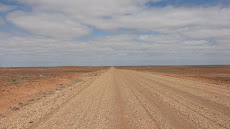
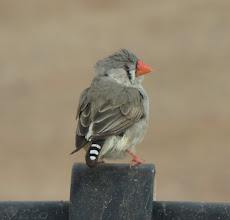
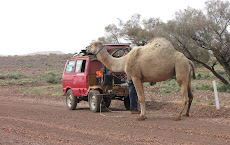
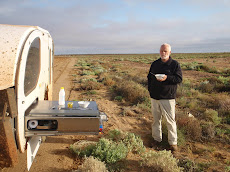
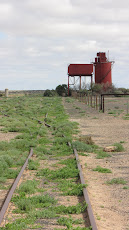
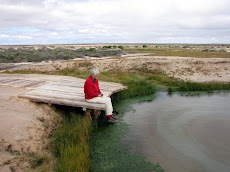




















































































No comments:
Post a Comment